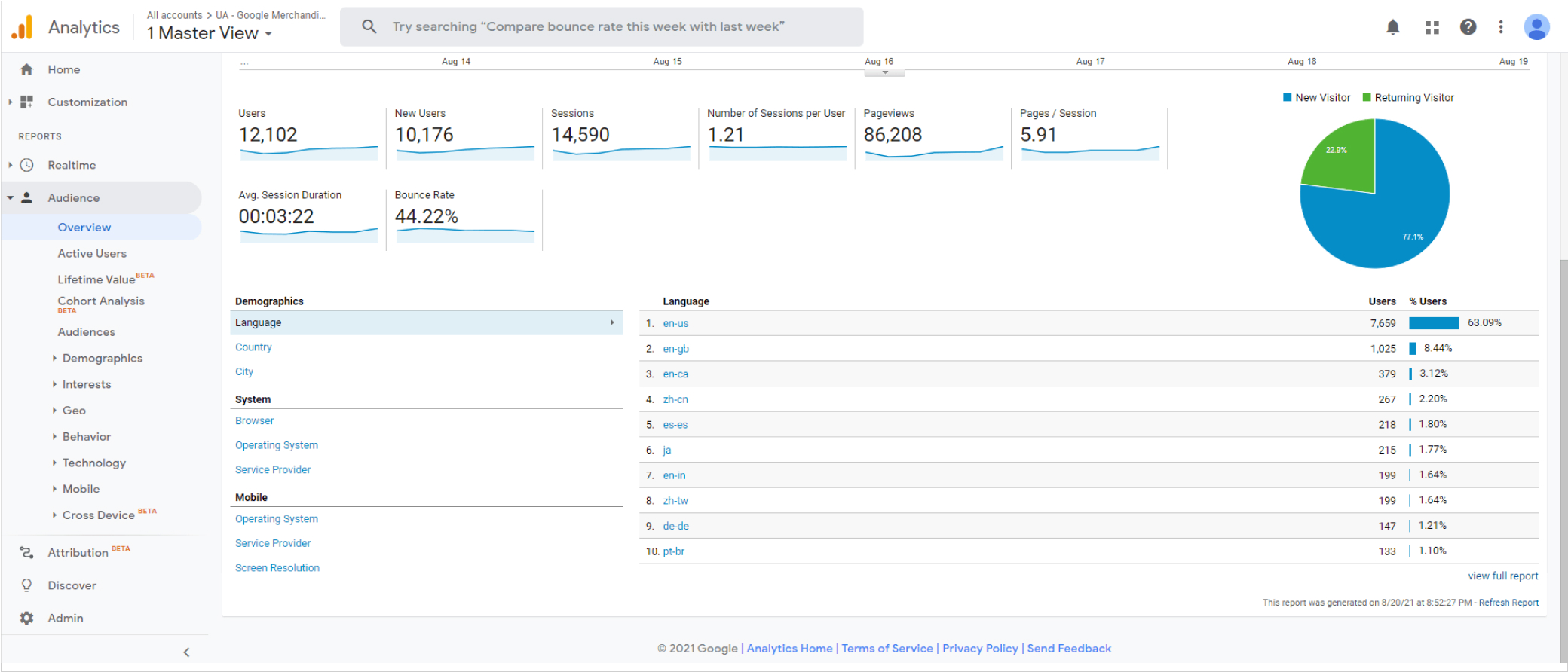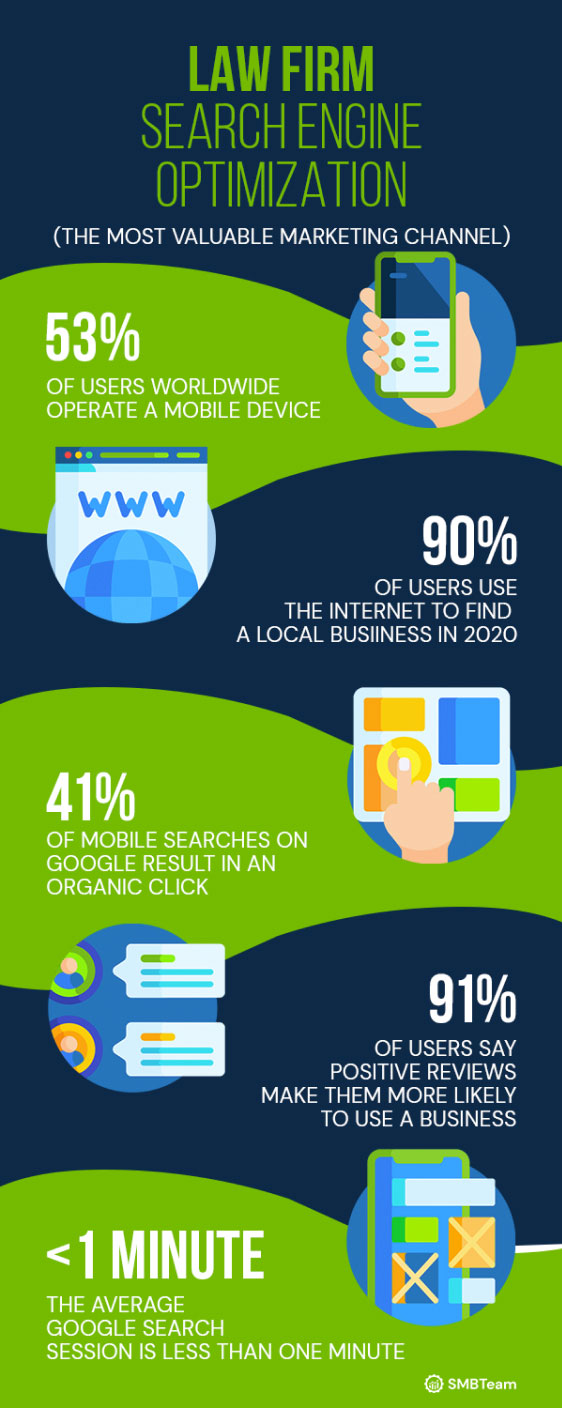Law firm marketing in the modern era is nothing like it used to be a few decades ago. Today, potential clients have the ability to find a lawyer with just a few short clicks on their smartphone or computer, a far cry from finding a lawyer in a phonebook.
Moreover, the legal industry as whole isn’t being left behind during the digital era either. A survey conducted by the American Bar Association (“ABA”) in 2020 found that 67% of attorney-respondents reported having to stay abreast of technology’s benefits and risks as a part of their firm’s core competency requirements. But the depth of technical knowledge required to practice law isn’t the only thing that’s changed over the years. The various methods lawyers use to market their practice has changed as well.
As it stands now, law firm marketing involves the use of multiple, sophisticated means of disseminating information, and it’s simply not enough to hand out business cards or even brochures anymore. Your clients not only need to know who you are, but also, they expect you to educate them as to what exactly it is that you do.
Utilize Strategic Law Firm Marketing Techniques, Not Just “Advertising.”
For example the Super Bowl, arguably the most highly televised sporting event in the United States. About 91.6 million people tuned in to watch the Super Bowl in 2021, and the cost of running a 30-second in-game advertisement was about 5.5 million dollars. When you break down the numbers, this means that a company would spend roughly $17 per viewer to reach 91.6 million people.
However, when we start to ask some questions, the flaw in this type of mass advertising becomes apparent.
For example, how many of those viewers are children? How many of those viewers actually saw your ad? Were they eating or having a conversation when it played? Are they even the type of person who could in theory purchase your product? You would agree that it wouldn’t make sense to advertise legal services to a child or family law services to an unmarried adult with no children correct?
Strategic Law Firm Marketing vs. Advertising
Moreover, as opposed to simply spending a lump sum of money in hopes of reaching a group of people, strategic law firm marketing allows you to control how much money is spent on each marketing medium based on its performance. In addition, the “strategic” element of this type of marketing begins with the creation of a legal marketing plan that outlines, in detail, how you are going to implement your strategy. This plan should include, among other things:
- A target customer profile that identifies the type of clients that you are trying to reach in each practice area. For example, if medical malpractice cases are more profitable than dog bite claims, target medical malpractice leads. If older car accident victims tend to have higher damages than younger victims, target elder car accident victims.
- A complete marketing scheme that identifies all of the marketing channels you intend to use that year and a budget for each channel.
- A content calendar to schedule when you plan to release new content
- A performance review schedule to track the performance of each marketing channel you utilize, so you can modify your approach on an ongoing basis.

Structure Your Law Firm’s Website to Enhance the User Experience
In addition to offering content that’s authoritative and useful, your website should be structured to enhance the overall user experience. To do this, you’re going to want to focus on three key areas: navigability, useability, and content diversity. Navigability refers to a user’s ability to navigate your website with very little or no effort searching for what they are looking for. Some aspects of gauging your website’s navigability are obvious such as placing content where a user would expect to find it. For example, most users would expect a menu option titled “patent law” to take them to a page with information about, you guessed it, patent law.
Similarly, most users expect for there to be a “contact us” button or link at the top and bottom of each page or for the search bar to be located near the top of each page in the left or right-hand corner, but other aspects of your website’s navigability are more nuanced. Remember, the goal is for the user to be able to effortlessly navigate your website, so you may consider adding additional content that increases the site’s overall navigability such as sidebars with links to related pages that change depending on which page a user is viewing or an additional menu at the bottom of each web page that allows users to navigate your website with ease.
Integrate Comprehensive SEO Strategies into Your Law Firm Marketing Plan
In addition to offering content that’s authoritative and useful, your website should be structured to enhance the overall user experience. To do this, you’re going to want to focus on three key areas: navigability, useability, and content diversity. Navigability refers to a user’s ability to navigate your website with very little or no effort searching for what they are looking for. Some aspects of gauging your website’s navigability are obvious such as placing content where a user would expect to find it. For example, most users would expect a menu option titled “patent law” to take them to a page with information about, you guessed it, patent law.
Law Firm Marketing through SEO: The Fundamentals
It’s first important to understand the basics as to how Google works. Google uses a software called crawlers to analyze and index web pages. Significantly, this program is analyzing computer code, media such as pictures or videos cannot be analyzed by the program unless they have some text associated with them for the crawlers to analyze in an effort to try to understand what the image or video is about.
- Make sure you are incorporating relevant keywords into each web page on your website by conducting keyword research. You can accomplish this by creating a free Google Ad Words account and utilizing the keyword planner function (which is discussed in detail in the targeted advertising section of this page).
- Always include a metadata description for each webpage on your website
- Create unique titles and headings for each webpage that incorporate your keywords
- Each web page should have a logical heading structure that resembles an outline (H1, H2, H3, etc.)
- Always write descriptive alt text and file titles for your images
- Always link to authoritative, trustworthy sources. You’re always safe linking to government, educational, and well known news sources.
- Actively check your website for broken links. Remember, websites change over time, so if you linked to a source a year ago, check to make sure the webpage is still available.

